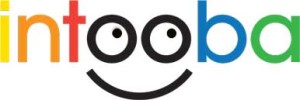CONCEPT: To find new and creative ways to teach and learn mathematics.
PURPOSE: The concept here is to engage students in an interested and engaging way to learn mathematics. Smells are assigned numbers. Problems are formulated substituting smells for numbers. Students smell the problems, and solve them numerically.
MATERIALS:
Extracts: Depending on the complexity of the problems undertaken, purchase up to ten different extracts from the supermarket. These will represent 0-9. It is advisable to start more modestly, and purchase six extracts giving 1-6. In this way, students become familiar with the actual smells (orange, banana, vanilla etc.)
Paper: One large blank sheet per group. Several smaller problem solving sheets of blank or graph paper per group.
Clip boards: One per group
Markers: Expo marker for writing on the board. Regular marker for setting up the problem on the large white paper.
Two-sided tape
Paper napkins
Pencils
PROCEDURE:
In this lesson, we are doing two digit by two-digit multiplication. Teach the students a traditional example. 34 X 21. Solve it with them.
Explain to the students that today they will be smelling various smells, and that these smells will be associated with a number which you will write on the board.
In a first attempt, write the numbers 1-6 on the board. Next to each number, assign a smell to a number. 1 – banana, 2- coconut.
Ask the students to come and smell the smells in their groups.
On the large piece of paper, outline where the scented napkins will go, make an “X” indicating multiplication in the appropriate place, and draw a line indicating a multiplication problem.
Ask the groups to formulate and solve their own problems.
The teacher circulates around the room to the different groups, puts the selected scents on the paper napkins and affixes the napkins to the large white paper with the double-sided tape.
The students go around the room with their clipboards and paper and they smell each problem. They solve them numerically.
The teacher asks groups to provide the solution to other groups’ work. Then the teacher asks each group if that was indeed their work.
As a follow up activity, the teacher may ask students to create their own problems using smells.
NOTE: to ask students to provide an answer in smell format, fully ten smells need to be provided.

